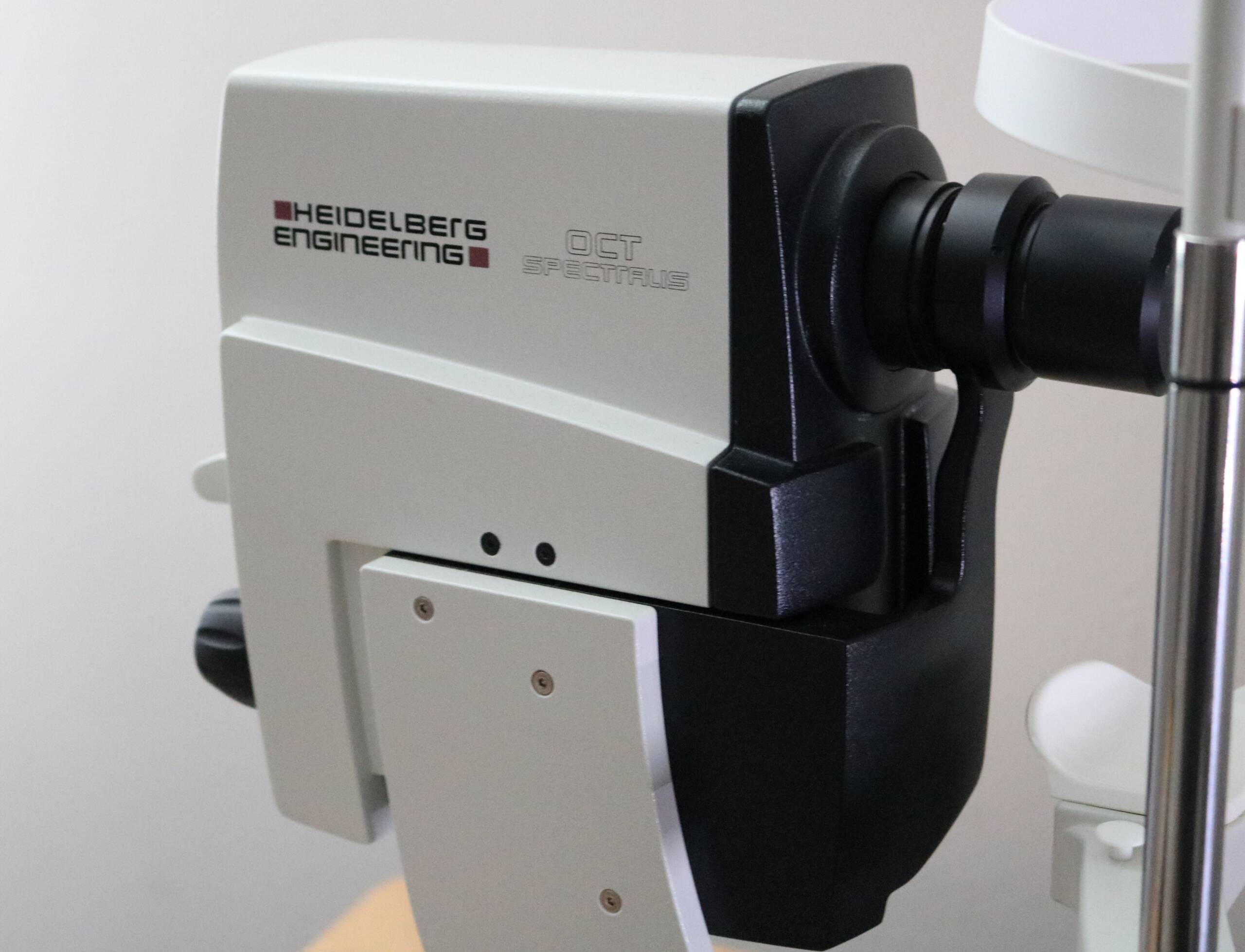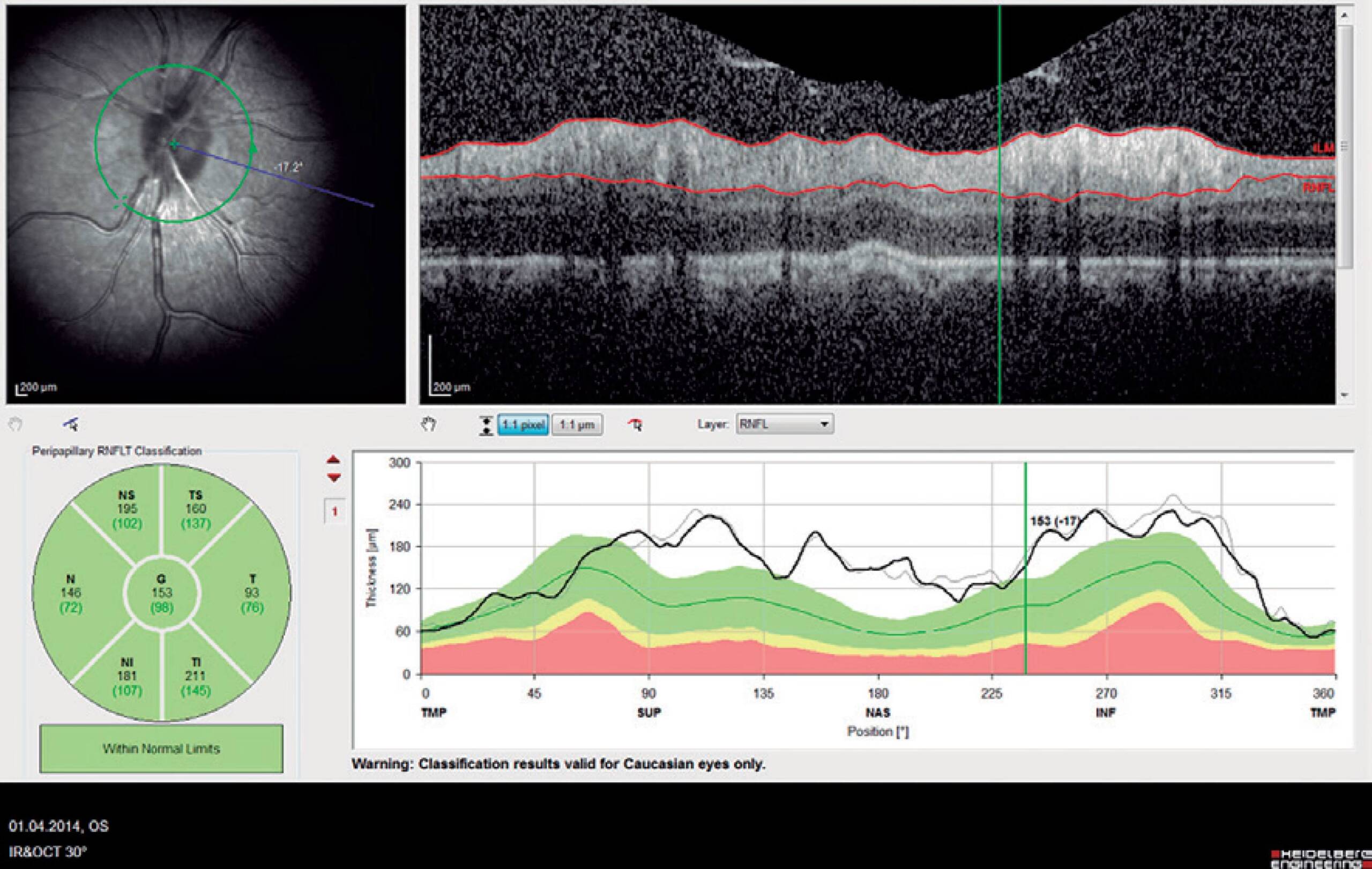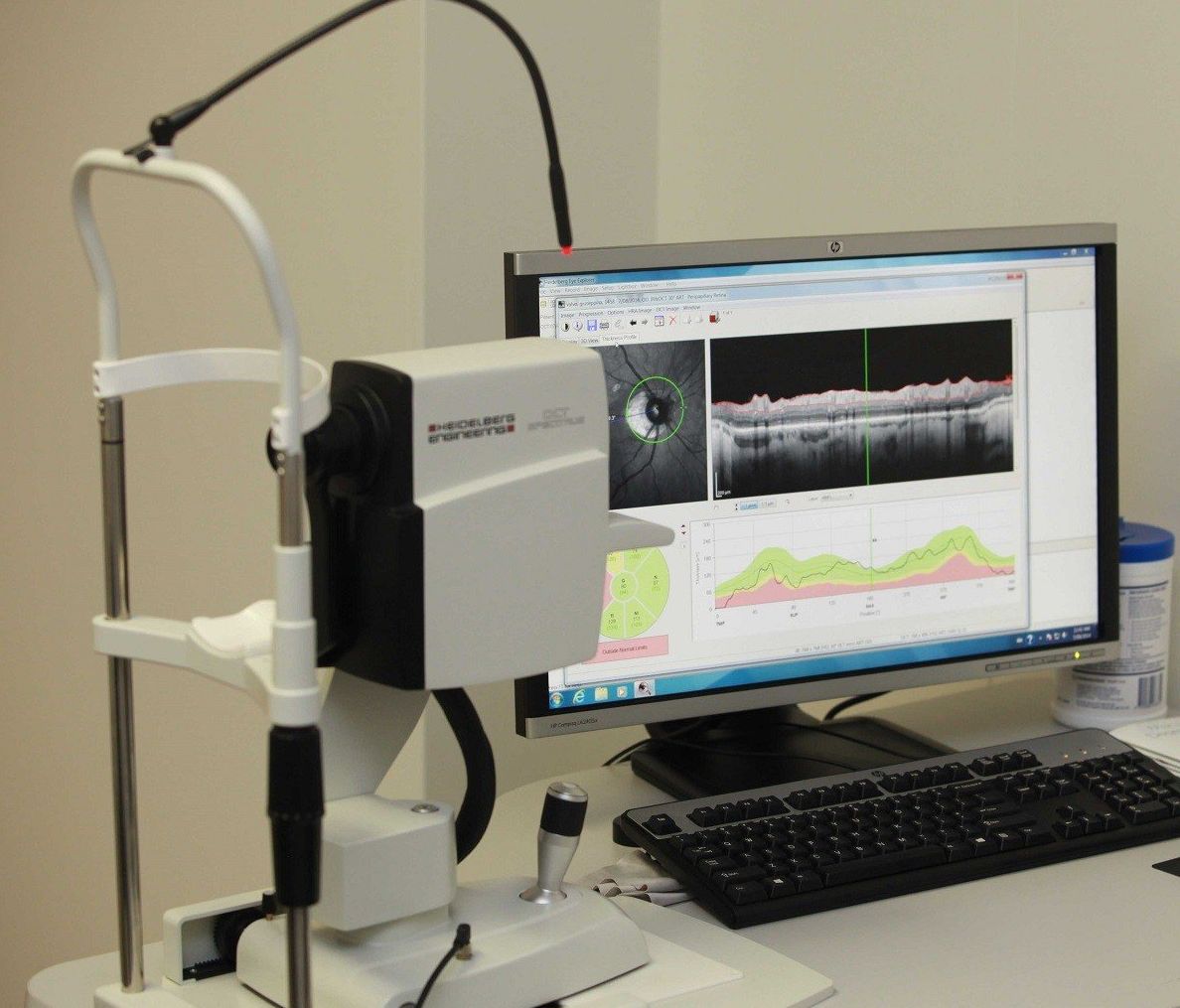Optical Coherence Tomography (OCT)
One of the many ophthalmic examination methods used at Medicover Hospital is the Optical Coherence Tomography (OCT) examination, an advanced ophthalmic diagnostic procedure available at Medicover Hospital.
The special feature of the method is that in a non-invasive way, (without external intrusion), using only light, the OCT is able to take high-resolution, cross-sectional images that can be used to detect even the tiniest lesions and separate areas of different optical densities.

What does OCT mean?
The optical coherence tomograph is designed to detect differences in the formulas of the fundus and optic nerve using so-called coherent light rays. The procedure is short in duration and does not cause any pain.
The results of the study can be used to follow the course of diagnosed diseases and the effectiveness of treatment even in the case of diabetic lesions (maculopathy), cataracts and macular degenerations in old age.
When do you need an OCT?
Our ophthalmologists will decide if a test is needed, but if you are affected by any of the following, you can also initiate an OCT test:
- fundus lesions caused by diabetes (maculopathy)
- macular degeneration (AMD) in old age
- glaucoma
- other diseases of the macula (yellow spot)
What to expect at the OCT examination?
The test is completely painless, fast, and not at all burdensome for you.
During the OCT scan, light rays scan the fundus formulas. Enlargement of the pupil is sometimes necessary for more accurate examination to make it easier for light rays to enter the deeper layers of the eye.
It is important that at a given stage of the examination, you look at a point motionless, with your eyes open, without blinking, and fix it. The test assistant will provide instructions throughout the test to ensure that you are getting the right results.
If the use of pupil dilator eye drops is required, the patient’s vision will be dimmed during the duration of pupil dilation. Within a few hours (6-8 hours), the effect of the eye drops will disappear and your vision will be sharp again with proper correction. In light of this, we do not recommend driving a vehicle after the test.


Why is it important to take an OCT examination?
Smoking, obesity and high blood pressure are serious risk factors, but those over the age of 50 should also take the OCT test annually.
Macular degenerations (i.e., lesions affecting the macula) attack visual acuity and can cause a deterioration in quality of life. If these lesions are not recognized in time and remain permanently untreated, they can ultimately lead to vision loss.
Glaucoma is also a dangerous disease that upsets the balance between the production and outflow of aqueous humor, which increases the pressure in the eye. This pathological mechanism will affect the blood supply to the optic nerve head, its cells (retina and optic nerve) will be destroyed. Cataract is an incurable disease, but if detected in time, it can be treated very well so that significant vision loss and blindness can be avoided. The emphasis is on early diagnosis, for which OCT testing is the perfect solution.
